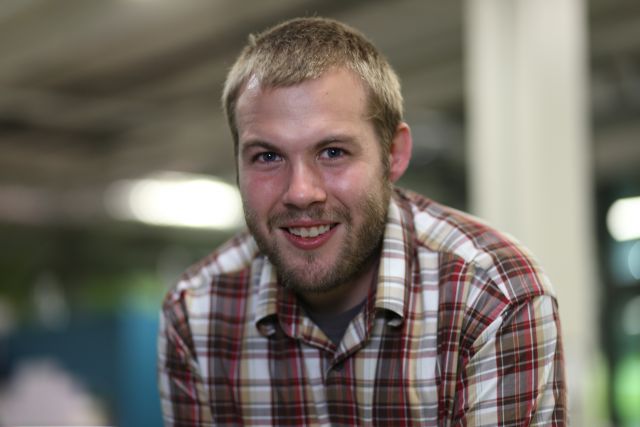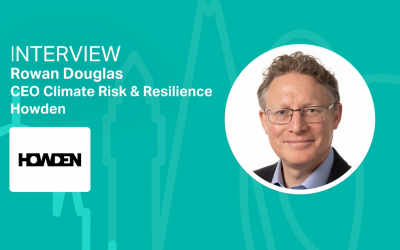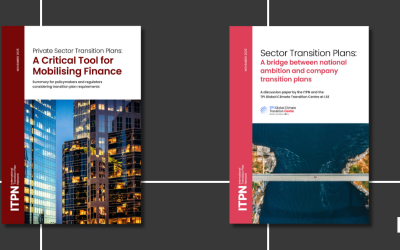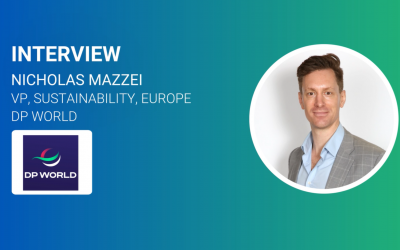Alexander Kubicek discusses how innovations in weather infrastructure can impact air quality
Ahead of the Sustainable Innovation Forum taking place in Katowice, Poland on the 9th and 10th December, we caught up with Alexander Kubicek, Chief Executive Officer at Understory, to discuss how innovations in weather can impact air quality.

Ahead of the Sustainable Innovation Forum taking place in Katowice, Poland on the 9th and 10th December, we caught up with Alexander Kubicek, Chief Executive Officer at Understory, to discuss how innovations in weather can impact on air quality.
Let’s start with some background on Understory and your role there?
In 2005, I went to aid in Hurricane Katrina relief. I was shocked and deeply saddened by the loss and devastation experienced in the affected region. While weather often mystifies us, I was hit hard by the implications of us simply not understand weather well enough. We did not understand it well enough to provide the needed safety recommendations and we certainly did not understand it well enough to build in economic resiliency for those in harm’s way. In an age of incredible technological advancements, why wasn’t there a technology available to help us truly understand weather so that we could resolve these worldwide issues? This question spurred me to further pursue my interest in short-term storm forecasting while rethinking how governments and businesses approach natural weather disasters.
As I researched cloud microphysics and atmospheric chemistry while attempting to improve short-term storm forecasting, I came across a massive observation gap within storm data—radar and satellite were only looking up at the sky, not measuring what was occurring on the ground. Since measuring weather impact on the ground is a critical component to validating short-term forecasting and understanding the full effects of a weather event, I set out to capture that data.
Through data collection, I learned businesses were essentially shooting in the dark when it came to their weather strategy because they only had bad data to work with. The weather information they were given was good enough to know whether or not they were going to need an umbrella any given day, but nowhere near accurate enough to rely on for business decisions. As a result, I co-founded Understory to advance the methodology for weather data collection and better position that data to help society tackle the effects of weather on the world’s economy, and—more importantly—human life.
So, to expand the world’s knowledge of weather, we measure how weather impacts people, businesses, and cities at the ground level. To do this effectively and economically, Understory designs, manufactures, deploys, and operates networks of ground-based, patented weather sensors that deliver real-time, solid-state measurements.
While an experience of mine sparked this initiative, my role is to lead and support an impact-driven team that’s consistently pushing the needle in artificial intelligence and product innovation to change how the world understands and works with weather and atmospheric conditions. Our live networks, which are interspersed on three continents, have reduced fraud in the insurance industry and increased efficiency in agricultural supply chains on a global scale. While this is a start, we’re already in the process of taking our commercialization of this grand mission to two other continents and further scaling our deployed networks.
Which of your current projects are you most excited about?
We are capitalizing on our established weather infrastructure to change how air quality is understood and improved—an innovation we’re incredibly excited about! Through this quick and simple addition to existing infrastructure, we’re able to provide the world with a crystal-clear view into their immediate atmospheric conditions.
A region’s weather directly affects the air quality of each city that falls within that region. By marrying these two areas of measurement together in one network, we’re able to help cities forecast and understand their city’s air quality on a very granular level. For example, by knowing a city’s nitrous oxide level and weather parameters, one can forecast the onset of ozone and regulate traffic to reduce the impact the presence of that ozone has on those who live and commute through it.
This innovation really makes the invisible visible and once things are visible, we are better suited to take action!
What is your vision to transition towards a low carbon society?
For mayors and other municipal leaders, the challenge of combating air pollution requires a strategy that is more than just environmentally effective. To succeed, programs must also be fiscally feasible, economically advantageous, and politically viable.
Achieving an air pollution strategy that meets these four criteria is impossible without affordable, accurate real-time data on atmospheric conditions. But with inexpensively obtained, up-to-the-moment quality data, leaders can:
- pinpoint the most significant sources of pollution,
- tailor strategies to target the main contributors to local pollution,
- measure the actual effectiveness of air-quality-improvement strategies, and
- demonstrate to the public and other important audiences that these strategies are worthwhile.
Through a data-driven effort to reduce sources of pollution and monitor levels of improvement, we will be able to transition towards a low-carbon society.
What in your opinion are the biggest challenges that the industry is facing currently?
Cities and their industry partners have historically been unable to see if their emission-cutting initiatives were having any sort of meaningful impact on their communities. Making the invisible, visible is the single biggest challenge government and businesses face. How do you regulate or redirect traffic to avoid exposure to dangerously high levels of ozone levels if you’re not monitoring nitrous oxide levels throughout the day? How do you demonstrate a new procedure is effective twelve months after implementation if you’re not monitoring local pollution levels throughout those twelve months? How do you correct new, significant sources of pollution in a community before they wreak havoc on its constituents?
We need technologies to gather accurate, real-time atmospheric data. We need to be able to see and understand this data. We need to be able to drive meaningful decisions and real change from this data.
Right now, the results of emission reduction strategies are completely invisible. For legitimate progress to be made, we need measurable proof of a strategies results. Accurate, real-time air quality data that factors in atmospheric conditions provides a clear and comprehensive view into such results.
With this visibility, we’re able to create air quality improvement strategies that easily garner support and swiftly drive meaningful improvement in our environmental conditions.
You are joining us at the 9th Sustainable Innovation Forum – how important are the planned discussions at the event in your view?
Municipalities and elected officials need to achieve a politically viable air quality/climate strategy. It’s important to understand how those strategies will be environmentally effective, fiscally responsible, and economically beneficial in order to reduce global emissions and reverse the effects of climate change. Is there any other issue more critical or urgent than this?
Understory is a Gold Sponsor at the Sustainable Innovation Forum 2018 which is taking place in Katowice, Poland on the 9th and 10th of December, find out more here.






